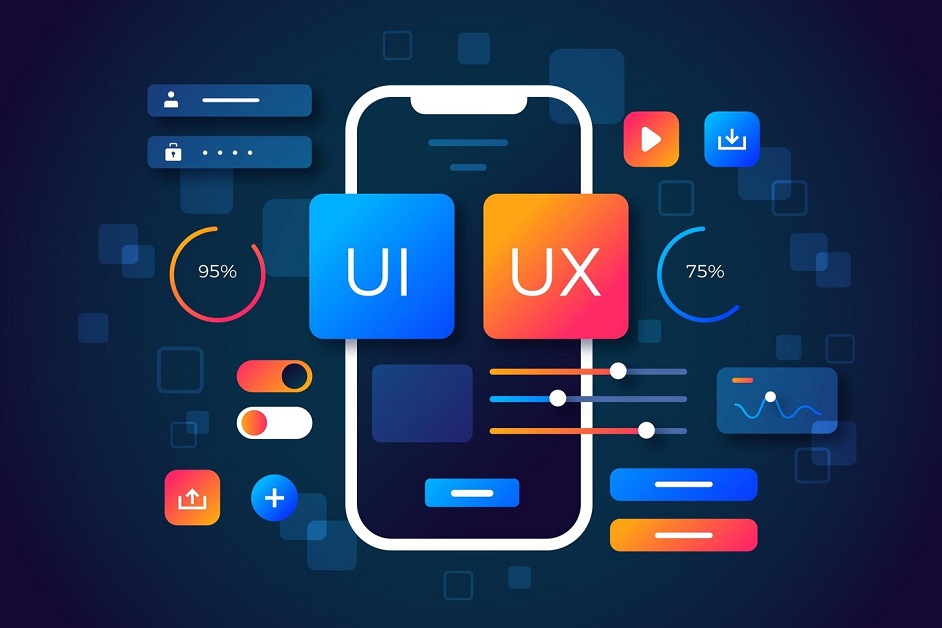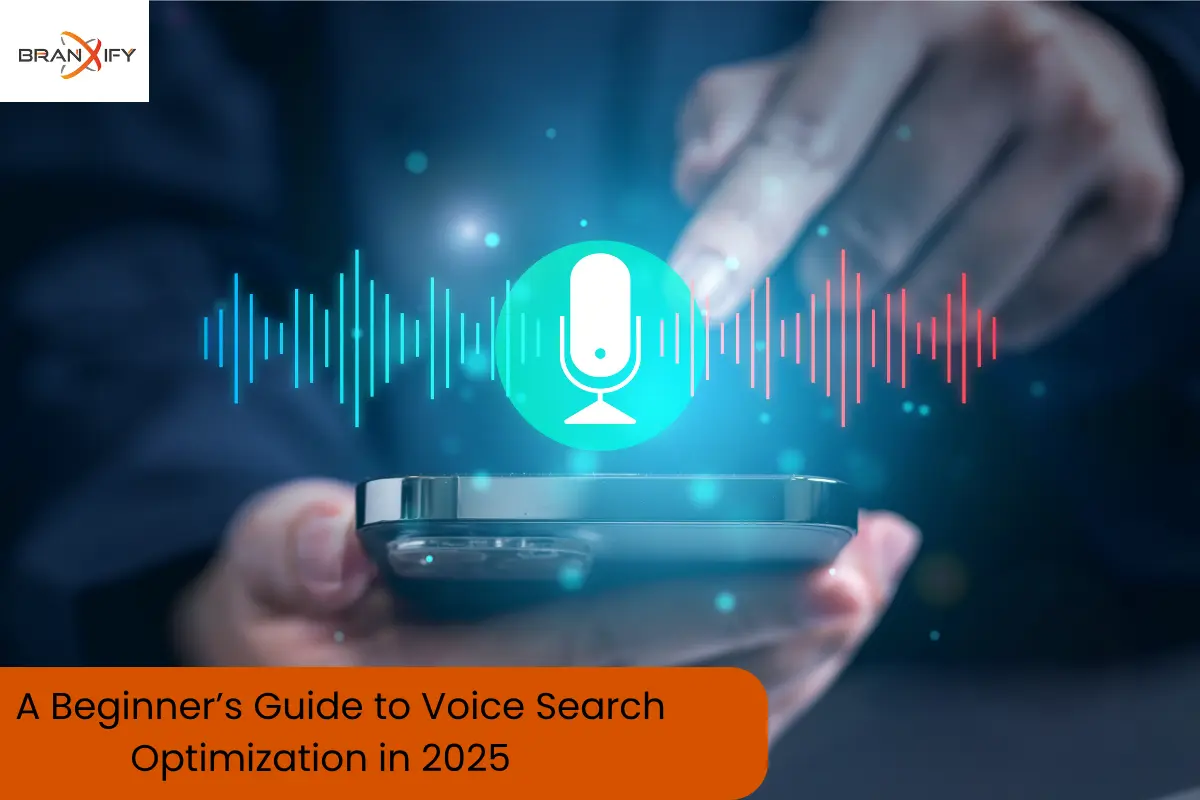Visual elements are the basic components used in design to create a visual composition. These include elements like color, shape, line, texture, space, and form, which work together to communicate messages effectively. They play a crucial role in guiding the viewer’s perception and enhancing the overall aesthetic.
In today’s digital world, a smooth user experience is crucial for business success, and visual design plays a pivotal role in achieving that. What is visual design in UI/UX? It’s the art of crafting a user-friendly and visually appealing interface that guides users effortlessly through your website or app. From color schemes and typography to layout and imagery, every element contributes to a cohesive experience. For businesses, incorporating effective visual design means enhancing user satisfaction, improving engagement, and ultimately driving conversions.
In this blog, we’ll explore why investing in quality visual design is a must for your business’s digital presence.
The Power of Visual Design in UX: First Impressions Matter
When it comes to creating an effective user experience, visual elements in UX design are among the first things users notice. In fact, research has shown that users make judgments about the quality and credibility of a website or application within seconds. This is why the visual elements in UX design are so important: they can either attract users or cause them to leave. The role of visual elements in UX design is to quickly communicate a brand’s message and establish trust, setting the tone for the rest of the user journey. A B2B web design agency plays a key role in refining these visual elements to create an impactful and engaging experience.
Creating a Lasting Impact with Visual Design
The visual elements in UX design serve as the foundation of a user’s interaction with a website or app. They impact everything from navigation to content hierarchy, influencing how users interact with and perceive the interface. A well-designed interface using compelling visual elements in UX design can create an emotional connection, which is essential for engagement.
For example, color choices can evoke certain feelings, while consistent typography and iconography provide a sense of professionalism. These elements guide users and help them quickly understand how to interact with the platform.
Visual Design Sets Expectations and Enhances Trust
The visual elements in UX design services do more than just make a website look appealing; they create expectations for the user. A polished, professional design signals that a business is trustworthy and credible. On the other hand, outdated or inconsistent visual elements in UX design services can create doubt, causing users to question the reliability of the site or app. When users feel that the visual elements in UX design services are thoughtfully arranged, it encourages them to explore further, deepening their connection with the brand.
Consistency in Visual Design Builds Familiarity
Consistency is key in any good user experience, and the visual elements in UX design contribute heavily to this. Consistent design across all pages of a website or app helps users become familiar with the interface, reducing cognitive load and making navigation easier. When the visual elements in UX design such as colors, typography, and button styles remain uniform, users don’t have to relearn the interface as they move through different sections. This consistency builds trust, making users feel more comfortable and confident as they explore further into the site or app.
Enhancing Navigation Through Visual Elements
Effective navigation is a cornerstone of good UX design, and the visual elements in UX design play a critical role here. By using contrasting colors, bold typography, and clear iconography, designers can direct users’ attention to key navigational elements. The strategic use of visual elements in UX design can guide users through the site smoothly, ensuring they never feel lost or frustrated. Simple but effective visual cues like arrows, buttons, or highlighted links make it clear where to click next, creating a seamless browsing experience.
Visual Elements in UX Design Influence User Behavior
The way users interact with a website or app is heavily influenced by the visual elements in UX design. By leveraging web design trends, designers can subtly guide users toward desired actions, such as making a purchase or signing up for a newsletter. For instance, buttons designed with contrasting colors and larger sizes encourage users to click. Similarly, using clear, easy-to-read fonts in the visual elements in UX design makes it easier for users to digest information, which can help reduce bounce rates and increase conversions.
The Impact of Visual Elements on Mobile UX

With mobile usage on the rise, mobile-first design is more important than ever. The visual elements in UX design on mobile devices must be optimized for smaller screens while maintaining their effectiveness. Simple, clean visuals with intuitive icons and touch-friendly buttons ensure users can navigate apps and websites with ease. Responsiveness is a key aspect of visual elements in UX design for mobile, allowing elements to resize or reposition seamlessly for different screen sizes, ensuring a smooth and consistent user experience across devices.
How to Use Visual Hierarchy for Better User Navigation
When designing a user interface (UI) and experience (UX), ensuring that users can easily navigate your website or app is essential. One of the most effective strategies to enhance navigation is by utilizing visual elements in UX design through a well-thought-out visual hierarchy. But what exactly is visual hierarchy, and how can it improve your users’ experience? Let’s dive in!
What is Visual Hierarchy?
Visual hierarchy refers to the arrangement and presentation of elements on a page to guide users’ attention in a particular order. It ensures that the most important elements stand out while less important items are visually de-emphasized. This structured approach allows users to effortlessly scan content and understand its organization.
In visual elements in UX design, the primary goal is to lead the user through the interface smoothly. By prioritizing visual elements based on importance, you can influence how users interact with your design. Whether it’s through size, color, contrast, or spacing, visual hierarchy helps users understand the flow of information without confusion.
How to Use Visual Hierarchy Effectively
Size Matters
The size of elements plays a significant role in establishing their importance in visual elements in UX design. Larger elements naturally draw more attention, so make sure your most crucial information, like headings or call-to-action buttons, stands out with larger fonts or sizes. This will signal to users what they should focus on first.
For instance, on a product page, the title of the product should be larger than the description, drawing users’ eyes to it first. The secondary content, such as pricing or features, can follow in smaller font sizes. This hierarchy helps users scan the page in the intended order.
Contrast for Clarity
Contrast is a powerful tool in visual elements in UX design. High contrast between elements allows for quick identification of key items. For example, using dark text on a light background ensures readability and helps emphasize important content like headlines or buttons.
In contrast, softer or muted tones can be used for secondary information, making them noticeable but not distracting. This balance between high and low contrast helps create a seamless flow, guiding users without overwhelming them.
Whitespace is Your Friend
Whitespace, or negative space, is often overlooked, but it’s crucial in visual elements in UX design. It provides breathing room around elements, allowing them to stand out and reducing clutter. Proper use of whitespace around headings, buttons, and images ensures users can easily focus on the most important aspects of the design.
For example, a well-spaced call-to-action button will naturally catch the user’s eye, especially when placed against a clean background with sufficient space around it. By incorporating whitespace, you create a more digestible and enjoyable user experience.
Color Choices and Visual Cues
Color is one of the most impactful visual elements in UX design. It can be used strategically to highlight important areas of your interface. Bright, bold colors often draw attention, while more neutral tones provide background support.

Use color to differentiate elements. For example, a vibrant color for a “Buy Now” button will immediately draw attention, signaling to the user that it is an important action. On the other hand, using more subdued colors for less critical elements like additional information or links helps to maintain focus on the primary actions.
Consistent Patterns and Visual Cues
Consistency is key when it comes to visual elements in UX design. Users rely on patterns they’ve learned from previous experiences. By maintaining consistent use of visual hierarchy throughout your interface—whether in navigation menus, buttons, or headlines—you ensure users feel comfortable and confident in their navigation.
For instance, if buttons are always colored a certain way or headings have a specific size, users will know where to look and how to interact with your site without needing to think too much.
Why Is Visual Hierarchy Essential for User Navigation?
Visual hierarchy helps users navigate your site intuitively, eliminating frustration. When visual elements in UX design are strategically arranged, users can quickly process information and take action, whether that’s signing up, purchasing a product, or simply exploring content.
By establishing a clear visual flow, you prevent cognitive overload and allow users to make decisions with ease. A strong visual hierarchy leads users naturally from one section to the next, helping them complete tasks without hesitation. If the design is chaotic or the hierarchy isn’t clear, users may become confused and abandon the site or app altogether.
Responsive Design: Ensuring Visual Consistency Across Devices
In today’s digital age, users access websites and applications on a wide variety of devices, from smartphones to laptops to desktop computers. For a business to succeed, its website or app must be designed to provide a consistent and enjoyable user experience across all these platforms. This is where Responsive UI/UX design plays a crucial role in ensuring visual consistency. But what exactly is responsive design, and how does it contribute to a seamless user experience? Let’s dive in.
Key Factors for Ensuring Visual Consistency
Flexible Grid Systems
A flexible grid system is the backbone of responsive design. It divides the screen into rows and columns, and each element on the page is placed into these grid areas. The grid adapts to different screen sizes by scaling elements proportionally.
Incorporating Visual elements in UX design, such as text, buttons, and images, within this flexible grid system ensures that content remains aligned and organized on all devices. Whether users access the website on a smartphone or a large desktop monitor, the layout adjusts fluidly to fit the screen, preserving a consistent visual experience.
Responsive Images

Images are often one of the largest files on a webpage, and they can slow down load times, especially on mobile devices. Responsive design ensures that images automatically scale to fit the screen, without losing quality or causing layout issues.
Using visual elements in UX design, you can optimize image sizes for different devices, ensuring they load quickly and look crisp on all screen sizes. This attention to detail helps maintain a smooth, consistent visual experience across various devices. Image cropping and scaling might also be employed to ensure that key parts of the image are always visible.
Adaptive Typography
Typography is another critical Visual element in UX design. On smaller screens, text can become difficult to read if the font size is too large or small. Responsive typography adapts to the screen size, ensuring that text is legible and well-spaced on any device.
For instance, on mobile devices, the font size might be slightly larger to compensate for smaller screens. On desktops, the font size can be adjusted to ensure a comfortable reading experience. Consistent, legible typography is key to creating a visually consistent experience, and this adaptation ensures that your message is always clear and accessible.
Touchscreen-Friendly Design
With the rise of smartphones and tablets, ensuring your website is touch-friendly has become essential. Interactive visual elements in UX design, such as buttons, menus, and forms, should be appropriately sized and spaced to accommodate touch gestures. Buttons that are too small or placed too close together may make it difficult for users to interact with your site on touch devices.
By considering touch behavior, designers can optimize elements for easy interaction, ensuring users enjoy a seamless experience regardless of the device they use.
Testing Across Devices
Even though responsive design adjusts to different screen sizes, it’s crucial to test your website or app across various devices and browsers to ensure everything works as intended. Test how visual elements in UX design appear on different screen sizes, resolutions, and platforms, from mobile phones to tablets to large desktop monitors.
Running tests will help identify any inconsistencies, such as misaligned elements or content that doesn’t scale correctly. Making adjustments during the testing phase ensures a polished, responsive design that looks great on any device.
Avoiding Visual Overload: How Much is Too Much?
- Keep it Simple: Visual elements in UX design should aim to enhance the user experience without overwhelming the viewer. A clean design with a clear visual hierarchy helps guide users effectively. When there are too many elements competing for attention, it leads to cognitive overload and confusion. Always prioritize simplicity over complexity.
- Limit Color Usage: A palette with too many contrasting colors can be jarring. Stick to a limited set of harmonious colors that represent your brand’s identity. Overusing colors can make the design look cluttered and distract users from the main content.
- Space is Key (Whitespace): Whitespace isn’t just space—it’s a vital design element that helps separate and highlight important elements. Avoid crowding content. Adequate spacing improves readability and makes your design feel more organized and comfortable for the user.
- Focus on Purposeful Elements: Every Visual element in a UX design element should have a purpose. Avoid including decorative items or unnecessary animations that don’t contribute to the user’s goal. Features should either add functional value or help in navigation, not simply serve as distractions.
- Maintain Consistency: Consistency in Visual elements in UX design (fonts, icons, buttons) ensures that users know what to expect and where to find essential features. Overusing different styles can create confusion, making the experience feel chaotic and disconnected.
- Test and Refine: What seems visually appealing to designers may not always work for the user. Conduct usability testing to gather feedback on the design’s effectiveness. This helps identify whether any elements are too cluttered, distracting, or unnecessary.
Here’s an image representing a clean and simple user interface design with limited colors and ample whitespace, in line with the idea of avoiding visual overload.
Boost Your Business with Branxify’s Comprehensive Digital Marketing Services
At Branxify, we specialize in delivering a full suite of digital marketing services designed to boost your online presence, increase customer engagement, and drive sales. As a leading digital marketing agency, we offer tailored solutions that address the unique needs of your business. Our team of experts is committed to providing top-tier services in UI/UX, SEO, Content Writing, Social Media Marketing (SMM), Pay-Per-Click (PPC) Advertising, and WordPress Development. Let’s dive into how our services can elevate your business to new heights.
UI/UX Design: Creating Engaging, User-Friendly Experiences
Visual elements in UX design and User Experience (UX) design are essential elements for any business that wants to create a memorable online presence. At Branxify, we craft intuitive, visually appealing designs that are both functional and easy to navigate. Our UI/UX services focus on understanding your target audience and designing an interface that enhances their experience while interacting with your website or app.
We employ a user-centered design approach that prioritizes usability, accessibility, and engagement. Whether you’re building a brand-new website or redesigning an existing one, our team ensures that your design aligns with your business objectives and meets the needs of your customers. Great visual Design in UI/UX leads to longer session times, reduced bounce rates, and improved conversion rates—ultimately driving business success.
SEO: Boosting Your Online Visibility

Search Engine Optimization (SEO) is the foundation of a successful digital marketing strategy. At Branxify, we help businesses optimize their websites to improve their rankings on search engines like Google. Our SEO services are designed to increase organic traffic and enhance your website’s visibility, making it easier for potential customers to find you.
Our SEO experts employ a combination of on-page optimization, keyword research, high-quality content creation, and off-page strategies to improve your site’s ranking. We also focus on technical SEO to ensure that your website loads quickly, is mobile-friendly, and is easy for search engines to crawl. With our results-driven SEO strategies, you’ll see improved rankings, more website traffic, and ultimately, more conversions.
Content Writing: Engaging Content That Converts
At Branxify, we believe that great content is the backbone of any successful digital marketing strategy. Our content writing services are tailored to your business needs and designed to engage your audience. From blog posts and articles to product descriptions and website copy, we create content that informs, entertains, and converts.
Our team of experienced writers ensures that your content is not only optimized for SEO but also aligned with your brand’s voice and messaging. By creating high-quality, informative content, we help establish your authority in your industry while keeping your audience engaged. Content is king, and Branxify ensures that your content strategy is both effective and engaging.
Social Media Marketing (SMM): Connecting with Your Audience

Social Media Marketing (SMM) is one of the most effective ways to engage with your audience, build brand awareness, and drive traffic to your website. At Branxify, we help businesses leverage the power of social media platforms like Facebook, Instagram, Twitter, and LinkedIn to create impactful marketing campaigns.
Our SMM services include content creation, audience targeting, community management, and paid social campaigns. We work with you to understand your audience’s preferences and behaviors, ensuring that your social media strategy resonates with them. With Branxify’s social media marketing expertise, you can grow your online presence, increase customer loyalty, and achieve your marketing goals.
Pay-Per-Click (PPC) Advertising: Maximizing Your ROI
PPC advertising is a powerful tool for driving targeted traffic to your website. At Branxify, we create and manage highly effective PPC campaigns on platforms like Google Ads and Bing Ads. Our goal is to help your business reach the right audience at the right time, generating quality leads and maximizing your return on investment (ROI).
Our PPC experts handle everything from keyword research and ad creation to bid management and performance tracking. We optimize your campaigns continuously to ensure that you get the most value from your ad spend. With Branxify’s PPC services, you can drive immediate traffic, increase conversions, and grow your business faster.
WordPress Development: Powerful, Flexible, and Scalable Websites
WordPress is one of the most popular platforms for building websites, and for good reason. At Branxify, we offer WordPress development services that help businesses create powerful, flexible, and scalable websites. Whether you need a simple blog, a corporate website, or an eCommerce store, our team has the expertise to bring your vision to life.
Our WordPress developers work closely with you to understand your business goals and create a custom website that meets your needs. From theme customization to plugin development and website maintenance, we offer end-to-end WordPress solutions. With a responsive, user-friendly website powered by WordPress, you’ll be able to provide a seamless experience for your visitors across all devices.

Open the door to your UX success
Final Words
Visual design plays an important role in UI/UX by enhancing user experience, guiding navigation, and fostering brand identity. A well-crafted visual design ensures that your product is not only functional but also aesthetically pleasing, making it more engaging and accessible. For businesses, investing in visual design is an investment in customer satisfaction and retention. By focusing on a seamless and visually appealing interface, you create a lasting impression, improve usability, and ultimately drive business success. In today’s competitive market, prioritizing visual design is no longer optional—it’s essential for standing out and staying ahead.
FAQs
What is a Visual UX Designer?
A Visual UX Designer focuses on creating aesthetically pleasing, user-friendly interfaces, balancing design and functionality to ensure a seamless, intuitive experience for users interacting with digital products.
What are Visual Design Principles?
Visual design principles include alignment, contrast, hierarchy, balance, proximity, and repetition. These principles guide the creation of designs that are both visually appealing and easy to navigate.
What is UI UX Design and Why is it Important?
UI (User Interface) and UX (User Experience) design focus on how users interact with a product. It’s crucial for improving usability, user satisfaction, and overall product success in the market.
What are Visual Design Tools?
Visual design tools include software like Adobe XD, Figma, Sketch, and Canva. These tools help designers create, prototype, and iterate on visuals, enhancing user interfaces and overall design workflow.






